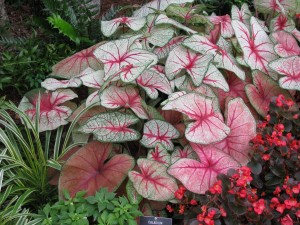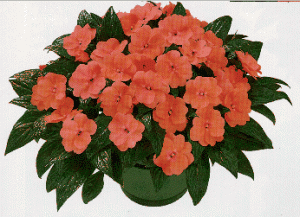Do you plant the same annuals in the same locations year after year? If so, you are like most of us, you find a system or design you like and stick with it. But, this strategy may cause you problems. When you plant the same species in the same location year after year, and it is prone to a disease, it may have a little bit of disease present one year, but the inoculum builds up from year to year and eventually you get to the point where you simply can’t grow that plant in that location any more. This has happened in the Midwest with impatiens downy mildew and it has moved east. Few plants have the flowering impact in the shade provided by impatiens, but if you have impatiens plants with yellowed leaves, stippling, or white growth on the undersides of leaves, you may have downy mildew. As the disease progresses, plants appear stunted and foliage drops, resulting in green, leafless stems.
Downy mildew can develop in the home landscape in three ways: it occurred last year and overwintered in plant residue; it was brought in this year on infected plants even though they showed no signs of the disease; or it got blown in by wind and rain from a neighbor’s yard.
Moisture is the key that allows the disease to spread from plant to plant in a landscape bed. We’ve certainly had plenty of moisture this year and plants that are grouped together in shaded locations where they never dry out are especially susceptible to this type of disease.
The best control is to remove infected plants and prevent inoculum from overwintering. Then try some new shade loving annuals and expand your horizons. Alternatives include New Guinea impatiens, begonia, caladium, cyclamen, fuschia, lobelia, perilla, and torenia.



